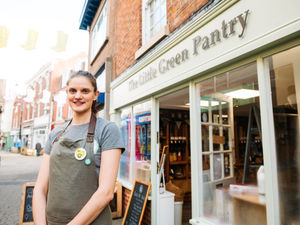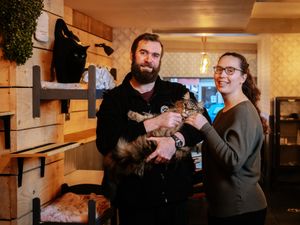West Midlands store closure rate was highest in UK in 2022
The West Midlands saw the biggest rate of retail store closures in the UK in 2022.
Across the regions there were 1,024 shops that shut with 596 new stores opening – a net loss of 428 which was the lowest since 2018 according to date from PricewaterhouseCoopers and the Local Data Company.
For the West Midlands the number of shops fell by 2.3 per cent with the East Midlands at 1.4 per cent – the third lowest in the country
Across the country, stores are closing at their slowest rate since 2014, with net closures also at their lowest level in five years
National closures are now at 32 per day with 22 new outlets opening each day across high streets, retail parks, shopping centres and stand alone outlets.
The fall in the West Midlands was down from 5.4 per cent in 2021 when there were 641 openings and 1,676 closures and a net change of 1,035.
The West Midlands saw some parts of the high street thriving with takeaways, convenience stores, DIY and pet stores bouncing back, helped by pandemic trends.
Retail parks across the country remain the most resilient outlet type with a small 0.3 per cent closure rate with shopping centres (down 1.6 per cent) also recovering at a promising rate. High Streets were slightly lower at minus 2.6 per cent but all outlet types saw a significant improvement in their net closure rates.
Sarah Phillips, PwC Partner and consumer markets leader for the Midlands, said: “In the last few years, the region has seen some major retailers exit the high street. However, it’s not all doom and gloom as we’re seeing some green shoots appear, as the rate of store openings has doubled in line with store closures.
“It’s unfortunate that business failures are part of a working economy, due to factors like business model shifts, changes in technology and consumer habits. We’ve been through a long period of generally lower levels of closures, predominantly due to Government support and low interest rates. However, history shows us that in challenging times, we also see an increase in innovation and opportunities for new stores and hospitality venues to thrive, such as how restaurants pivoted during the pandemic to meal-kits and at home deliveries.
“Furthermore, we are seeing innovative store openings as retailers seek to provide experiences to consumers and better utilise space, mixing fashion with lifestyle, beauty and hospitality offerings whilst using the latest technology to entice younger shoppers. For example, the recent plans unveiled for the ex-John Lewis store in Grand Central include a restaurant, gym, food market, rooftop garden and co-working spaces, modernising away from a traditional department store.
“There are challenges ahead with a potential recession and the cost of living crisis continuing, however we have seen how quickly the tide can change and there is positive growth for retail across GB, as more people return to work and offices, boosting the high street.”
The latest research shows the lowest number of closures across Great Britain since the research began, marking a positive turn for retail post-pandemic. The 2022 full-year results show a total of 11,530 chain outlets (those businesses with five or more outlets) exited high streets, shopping centres and retail parks – a significant drop from the 2021 figure of 17,219 outlets. Equivalent to 32 closures per day, the figure remains significantly lower than the almost 50 per day that were closing during the pandemic period. New store openings have improved with 7,903 store openings (equivalent to 22 per day) this year, the highest since 2019. Net closures now sit at 10 per day, marking the lowest rate since 2016 – and just 1.7 per cent of the total number of chain outlets, compared with the 5.7 per cent that closed in 2021.
Lucy Stainton, commercial director for the Local Data Company who collect the research, said: “CVA and administration activity dropped in 2022, helping to drastically reduce the total number of closures across the market. Alongside the benefits of the first full year free from restrictions, the return of office workers and tourism boosted footfall, supporting new store openings.
"Shopping centres bounced back in 2022 after a turbulent period as acquisitive brands opened units across destination centres. Retail park performance also improved as easy access, free parking and the convenience of these locations attracted shoppers.
"Stronger than anticipated golden quarter performance provided a solid base from which to start 2023, as postal strikes drove shoppers back to bricks and mortar for their Christmas shopping. We expect 2023 to remain positive with funding available for stores to protect against high energy prices, the continuation of workers returning to offices and a revision to business rates providing much needed support to navigate current market headwinds.”
* The British Independent Retailers Association says that the key to the high street thriving is for there to be a diverse number of shops on offer for its visitors.
Chief executive Andrew Goodacre said it was encouraging to see that the number of closures was decreasing.
He said traditional retailers were being replaced by takeaways and amusement arcades.
“The type of businesses we see in high streets is changing and has done for some time. Change is inevitable but the really successful high streets have a really good mix of businesses – shops, leisure, hospitality, convenience, culture etc.
"These are interdependent businesses and we should not let high streets be dominated by a particular type of business. Diversity brings vibrancy to the high street.
"Furthermore, the Government should not see this report as a reason not to support high streets. 15,000 jobs have been lost in retail already this year. Energy bills are set to significantly increase once the government support comes to an end, and communities need their local shops more than ever. The Chancellor must use the Spring Statement to bring forward ideas for growth and restoring consumer confidence,” said Mr Goodacre.





